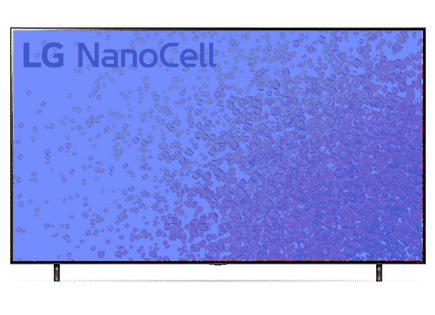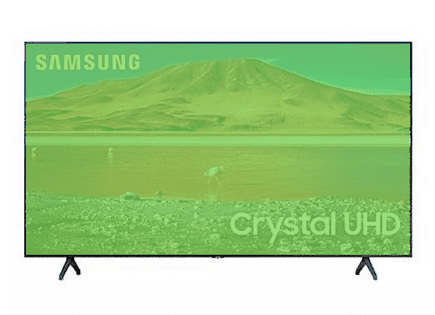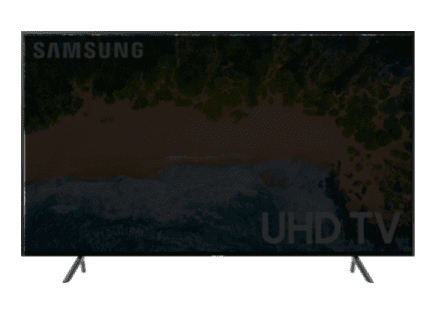
Samsung TV Blue Tint (Try THIS Fix First)
So your Samsung TV has a blue tint – the backlight is on and “working”, but it’s blue! This can be incredibly frustrating, especially when it happens on a brand new TV.
Luckily, it’s usually only a temporary issue – I’ve found a several proven ways to fix it.
If you try each and every one of these solutions, I am extremely confident one of them will work for you.
Samsung TV Blue Tint
If your Samsung TV has a blue tint, you need to reset it. Unplug your TV and wait a full 60 seconds. While the TV is unplugged, press and hold the power button for 30 seconds. After the 60 seconds are up, plug your Samsung TV back in and it should work.
9 times out of 10, power cycling a TV will fix the blue tint issue you’re seeing.
Of course, there are times when the above solution does not fix the problem. In that case, the problem is usually a hardware issue.
However before we troubleshoot the hardware, there are several other practical, and easy troubleshooting steps you should try.
Unplug Samsung TV from wall
Again, while this fix sounds obvious, unplugging your Samsung TV from the wall socket (power-cycling) is the most common way to get rid of the blue tint you’re seeing.
The key here is to actually wait the FULL 60 seconds. Have a little bit of patience and make sure it’s been at least a minute before plugging it back in.
While the TV is unplugged, find and hold the power button on your Samsung TV for 30 seconds. Make sure you are holding the power button on your TV, and not your remote!
This will help to drain any residual power left in the TV and allows the TV to soft reset itself. This is different than simply switching the remote on and off!
Once you plug the TV back in after the 60 seconds, you should see it power back up no problem.
While this fix should work for about 90% of cases, the remaining 10% can be a bit trickier. If your Samsung TV still has a blue tint, try the fixes detailed below.
Check all HDMI connections
If power cycling your Samsung TV and changing the input/source didn’t do the trick, then the very next thing you should check are your HDMI connections.
If you have anything connected to your TV via HDMI, make sure that the connections are snug! That means unplugging them and then plugging them back in securely.
With the rise in popularity of HDMI streaming devices like Roku and Firestick, more and more Samsung TV owners are reporting seeing a blue tint.
And it’s often due to a bad HDMI connection.
Bad HDMI connections come in a few forms:
- Loose HDMI connection
- Faulty HDMI port
- Bad HDMI cable
If you confirmed the connection is secure, go ahead and double-check that you are on the right Input channel as well.
To do this, look at the back of your TV and find the HDMI port you’re using. Above the HDMI connection, there should be a label, or some writing on your TV, indicating which HDMI port number it is.
Take note of that number (HDMI “2” in the example above).
Then grab your Samsung TV remote (NOT your Roku or Firestick remote, if you’re using those) and select SOURCE (or INPUT).
Method 1 – Enable Input Source using a Remote Control
- Turn on your TV
- Press the Source button on your remote control
- Select the desired input mode
Or if you don’t have a remote…
Method 2 – Change Input Source without Remote Control
- Turn on your TV
- Press the MENU button on the side or bottom of the TV
- Use the volume button to navigate to the source option
- Press the menu button to select the desired input source
Note: Some TVs have a source button at the back, or side that you can use to select your preferred input source.
If the connection is secure, and you’re on the correct input, I would try connecting to a different HDMI port.
Samsung TVs often have multiple ports, sometimes up to four! Use a different port and see if you get the picture back to normal.
If not, the last possible fix here is to replace the HDMI cable you’re using and see if that does the trick.
Reset Samsung Picture Settings
Another possible fix here is to simply reset your Samsung TV Picture Settings. Doing this will reset your screen settings back to factory defaults.
To reset your Samsung TV Picture Settings:
- Press Home on your Samsung remote and then go to Settings
- Select Picture
- Scroll down to Expert Settings
- At the very bottom, select Reset Picture and finally Yes
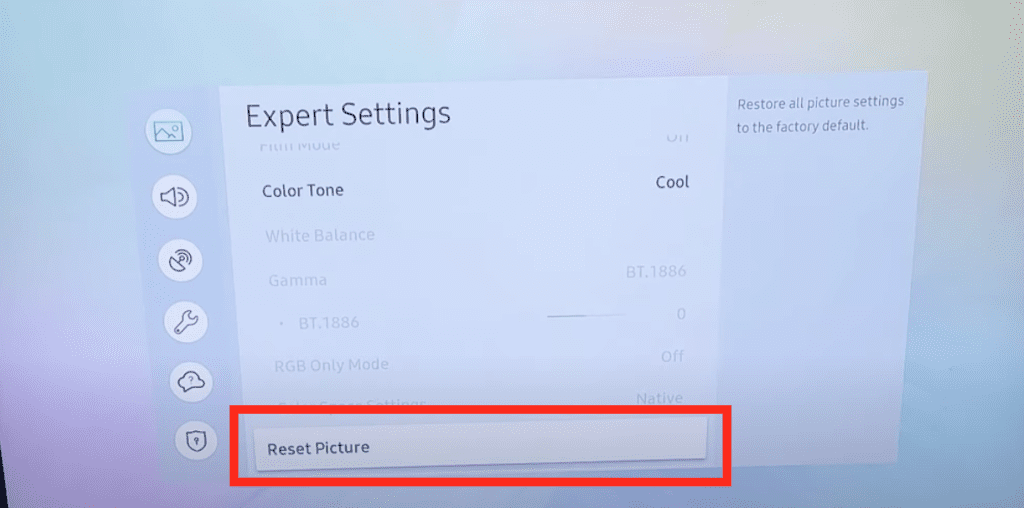
Turn off Energy Saving Mode
If you’re still getting a blue tint, it’s time to investigate whether or not you have Energy Saving Mode turned on.
Energy Saving Mode automatically adjusts the brightness of your TV to reduce the amount of power it consumes. Occasionally this feature is to blame for the blueish tint you’re seeing on the screen.
To be safe, let’s turn Energy Saving Mode OFF. Follow these steps:
- Press Home on your Samsung remote and then go to Settings
- Scroll down to General
- Select Eco Solution
- Select Energy Saving Mode
- Press Enter on the remote to turn it OFF
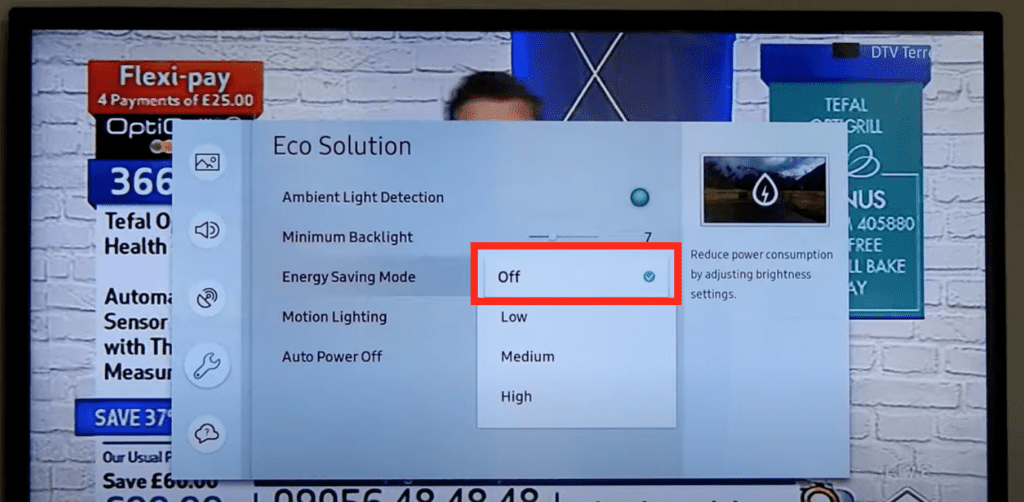
NOTE: on some Samsung TV models, Energy Saving Mode is called “Power Saving Mode”
If you have an older model, try going to Settings > General > Eco Solution > Ambient Light Detection.
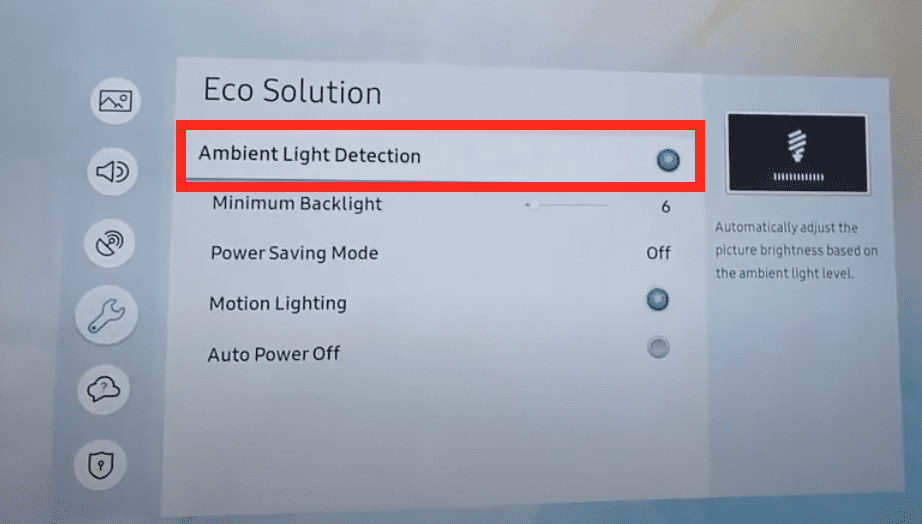
Update Samsung TV OS
Your Samsung TV can run into a lot of issues if the software isn’t up to date.
All you need to do is look for the newest firmware update available for your TV model. Most of the time these updates happen automatically, but occasionally they get missed.
Here’s how:
- Go to Settings.
- Select the option Support.
- Now, go to Software Update.
- Select the Update Software option.
Your TV will automatically update itself. This process may take a few minutes, but your TV will let you know when it’s done.
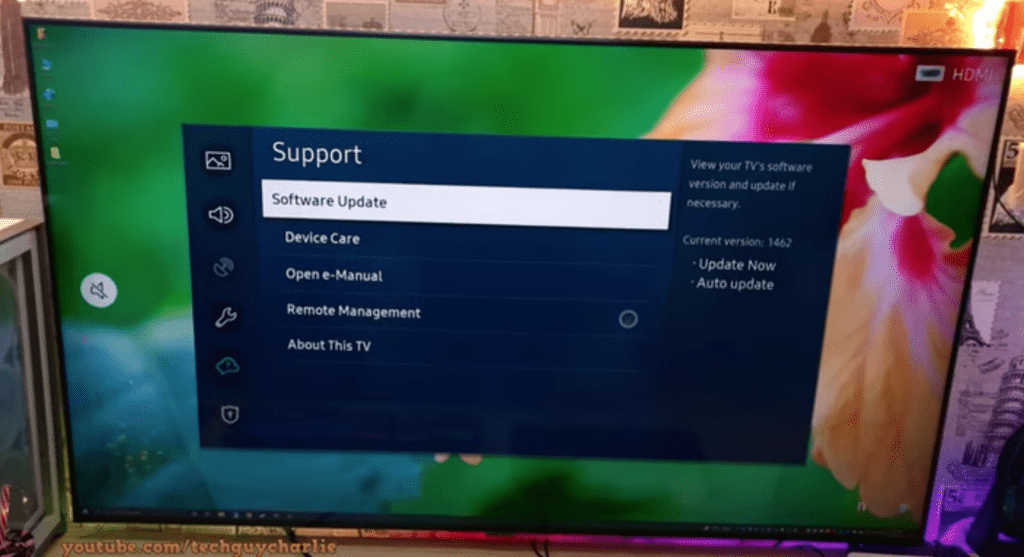
Your TV will now automatically start to look for any available updates. If there is a new one, your TV will install it for you.
You’ll want to ensure you update your Samsung TV often to keep up with the newest software!
Factory reset Samsung TV
If updating the OS didn’t resolve your blue tint problems, it’s time for a full factory reset.
With the TV powered on click the Home button on your remote.
Then go to Settings > General > Reset. Then enter your security PIN (“0000” if you never set one). Your TV will turn off and on again and then display the initial setup screen.
This will essentially restore your Samsung TV to the settings it had on the day you purchased the television.
(If you have an older Samsung TV, the factory reset steps differ slightly from what’s above)
Factory reset Samsung TV without remote
If for whatever reason you do not have access to your TV’s remote, you can still factory reset your Samsung TV.
To do this find the power button on your TV. Depending on the model you have this may be on the right hand side, left hand side, or very bottom of the device.
With the TV on, press the Menu button on the TV and then toggle to Settings > General > Reset.
If you’re having trouble finding these buttons on your TV, or if your TV is mounted in a tight spot, there are other options.
First, consider plugging in a USB keyboard directly into the back of your Samsung TV.
You can then use the keyboard to navigate and reset your TV.
Another option, if you have a Samsung Smart TV, is to download the the Samsung SmartThings app to your smart phone.
After connecting your TV to the app, you can use your smart phone as a remote!
A final possibility is to grab a universal remote you have lying around and enter the appropriate Samsung code for the remote to get it working.
At this point you should have fully resolved your power issues but just in case you haven’t I’ve included some additional steps worth trying before calling it quits.
Replacing Samsung LED backlight strips
The backlights on TVs consist of strips of LED lights. Each of the individual LEDs on the strip have a yellow film covering that helps to modulate the color/tint of the LED.
Occasionally this yellow film covering cracks, breaks and/or deteriorates. When this happens, a blue tint occurs.
This can happen on a handful of the LEDs, or all of them. But regardless, it’s easier to replace the entire strip than it is to replace a single malfunctioning LED light.
You can order a set of backlight LED strips for your exact TV model online.
Replacing the LED backlight strips is a bit of a hassle because there are lots of screws to remove and you need to disassemble all the bezels.
You will also need to remove the glass panel, which is fragile and very expensive to replace.
In other words, I would only recommend replacing LED backlight strips if you’re familiar with disassembling TVs.
If you don’t want to take on the project, you could use a Samsung technician or TV repair store to do it for you, although it will cost more.
In most cases replacing the LED backlight strips will cost between $100 and $200, depending on how many strips you need. The majority of TVs have 9 to 12 LED backlight strips, but some will have more depending on the size.
Replacing the LED backlight strips on your TV is a risky project, but it will likely resolve your blue tint issue and save you hundreds of dollars on official repairs.
Samsung TV support
If you tried all the troubleshooting steps above and your Samsung TV still has a blue tint, you should contact the Samsung TV support team directly.
They can be reached at: 1-800-SAMSUNG (726-7864)
- Samsung Care Pro 8 AM – 12 AM EST, 7 days a week.
They offer a variety of service methods, from in-home service to mail-in options.
The cost for this service will vary depending on the final diagnosis and whether or not the work is covered under warranty.
But the good thing is you’ll get a certified Samsung technician to take a look.
Samsung TV warranty
You can also check online to see if your TV is covered under Samsung’s warranty.
Unfortunately Samsung TV warranties typically only last 1 year and most of the cases I’m hearing of blue tint are from TVs that are already several years old.
Still worth a shot.
Conclusion
If you’re seeing a blue tint on your Samsung TV, don’t panic, there are several proven fixes you can try:
- Power cycle your TV
- Check all your HDMI connections
- Reset the picture settings
- Turn off Energy Saving Mode
- Update your TV’s software
- Factory reset your TV, with or without your remote
- Replace your TV’s LED backlight strips
- Contact Samsung TV support
- Check your Samsung warranty
Hopefully one of these fixes worked for you!


